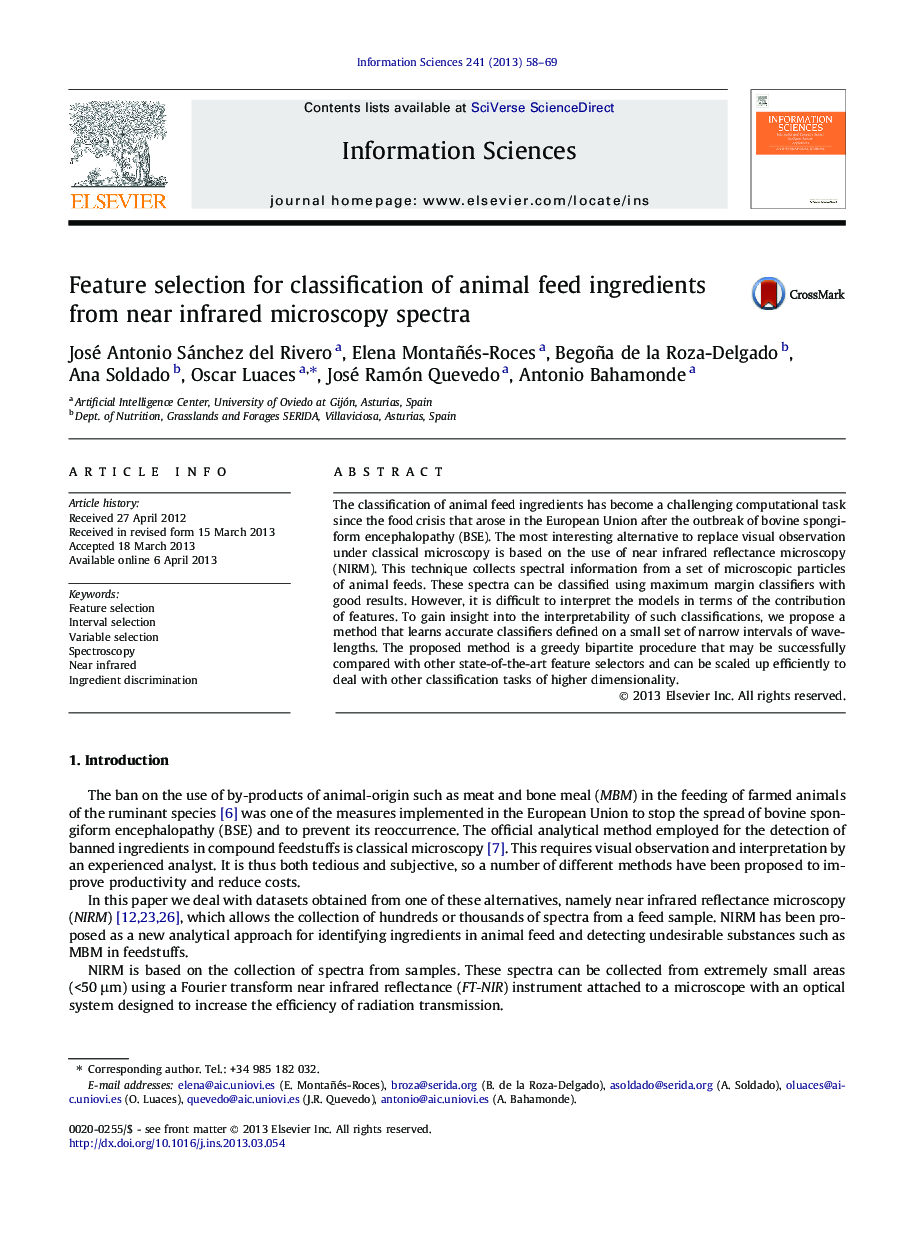| Article ID | Journal | Published Year | Pages | File Type |
|---|---|---|---|---|
| 394524 | Information Sciences | 2013 | 12 Pages |
The classification of animal feed ingredients has become a challenging computational task since the food crisis that arose in the European Union after the outbreak of bovine spongiform encephalopathy (BSE). The most interesting alternative to replace visual observation under classical microscopy is based on the use of near infrared reflectance microscopy (NIRM). This technique collects spectral information from a set of microscopic particles of animal feeds. These spectra can be classified using maximum margin classifiers with good results. However, it is difficult to interpret the models in terms of the contribution of features. To gain insight into the interpretability of such classifications, we propose a method that learns accurate classifiers defined on a small set of narrow intervals of wavelengths. The proposed method is a greedy bipartite procedure that may be successfully compared with other state-of-the-art feature selectors and can be scaled up efficiently to deal with other classification tasks of higher dimensionality.
